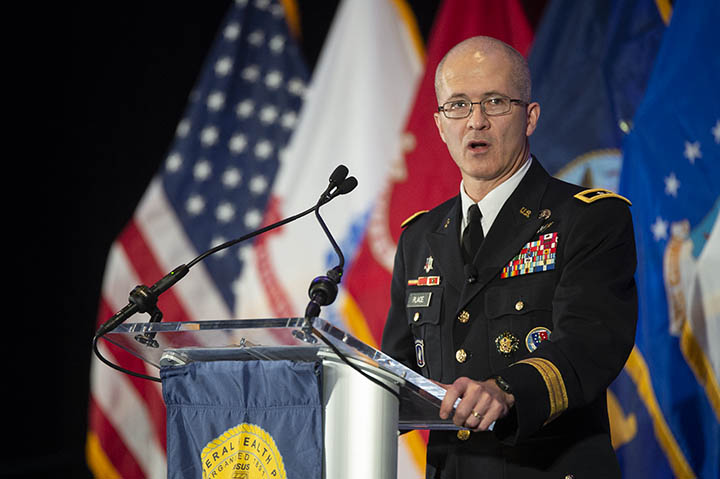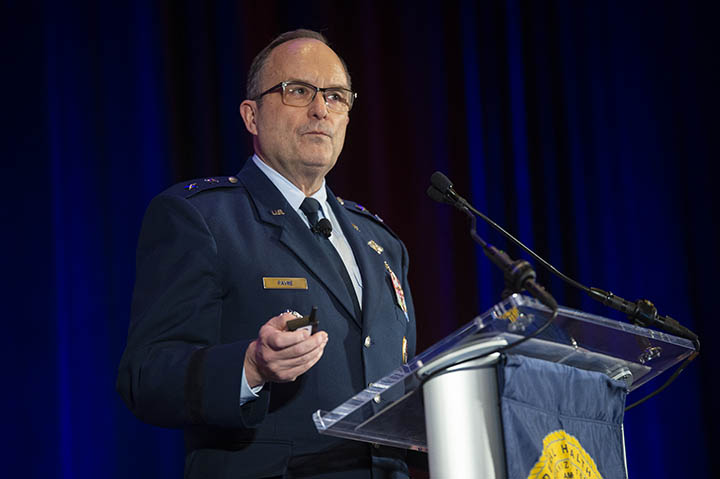
Collaboration and partnerships emerge as themes of Military Health transformation

Maj. Gen. Place, director of the National Capital Region, speaks at the AMSUS 2018 DHA general session.
Collaboration and partnership are paving the path forward for the Military Health System, explained two senior medical leaders Wednesday, Nov. 28, during the 2018 meeting of AMSUS, the Society of Federal Health Professionals.
Army Maj. Gen. Ronald Place, director of the Defense Health Agency’s National Capital Region Medical Directorate and the transitional Intermediate Management Organization, talked about the value of a market construct to support military treatment facilities under the DHA. This model calls for centralized functional capabilities at the DHA headquarters to ensure standardization and ensure efficiencies and intermediate management functions managed by market offices. Asking the audience to set aside their desire to take notes, he guided attendees through a series of illustrations and examples demonstrating how shared values can guide the transition designed to optimize the experience of care for providers, patients, and other stakeholders.

Maj. Gen. Lee Payne, assistant director for combat support at the Defense Health Agency (DHA), speaks at the AMSUS 2018 DHA general session
“Success for the markets will be that our key stakeholders value them as the absolute best, most valuable and efficient structures for peacetime and contingency operations,” said Place. “The process needs to be an orchestration of partnerships, optimizing services and the experience of care within each of the markets, much like an orchestra plays together to provide an experience of music.”
Capitalizing on the theme of partnership and collaboration, Air Force Maj. Gen. Lee Payne, DHA’s assistant director for combat support, took the stage to describe the agency’s plans to support the Department of Defense’s combatant commands and to collaborate with the military services to improve support to combat operations.
Payne discussed the need for establishing partnerships to coordinate medical support activities across the DHA in tandem with other support organizations to meet the needs of combatant commands, highlighting those that have already become part of the DHA organization, such as the Joint Trauma System and Armed Services Blood Program, among others.
Payne said DHA is in the process of assigning liaison officers to some combatant commands to enhance communication and collaboration, an opportunity he said DHA is committed to expanding to every combatant command.
“We consider ourselves the engine for this partnership,” said Payne. “Such capabilities were on display nationally and internationally during the aftermath of Hurricane Florence and Typhoon Mangkhut when combatant commands responded and partnered with the Federal Emergency Management Agency or the United States Transportation Command.”
In the future, Payne suggested that the DHA will stand up such support teams that demonstrate excellence in collaboration.
The four-day conference continues through today, Nov. 30.





















.png)









No hay comentarios:
Publicar un comentario